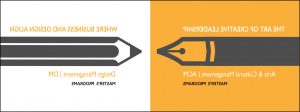Designing For Community and Connection
By Giselle Carr
Mary McBride, Director of the Design Management Program at Pratt Institute, recently spoke at sessions one and three of the International Design Symposium 2010 at the International Design Center in Tokyo, Japan. During session three, titled “Viewpoints Designers Must Have and Roles They Should Play”, the theme of “Post-Solution – The Creator’s View” was brought into context for designers and strategists in a post solution economy and world. The post solution economy, according to McBride, is one in which human and economic resources are invested into the design of everyday life. It’s an economy that is focused on needs-based, humanistic and sustainable solutions. As values, attitudes and lifestyles transition at an alarming rate, our society has shifted from wanting control over the world to wanting connection with the world; from separation from nature to attunement with nature; from focusing on debts of the past to our responsibilities to the future. This shift in values and priorities has myriad connections to the recent film Avatar.
Although the film did not garner as many awards at the Oscars as was predicted, there are still certain truths that it revealed about modern society. McBride opined to the audience that we are entering the age of the Avatar; that is to say, we are at the point where we are confronting our technologies and their consequences. As society struggles with its own wounds as well as the wounds of the world, we are stumbling between two worlds as our markets crash and natural disasters abound. We are beginning to challenge the lifestyle of aggressive goal orientation. The Avatar is both post solution consumer and post solution creator, in that he is equipped with the training and tools needed to succeed in confronting the world, and the contradiction of control versus connection. He reaches out for solutions, but is a product of the system that created him and gave him his sense of mission.
So where are we now? Locked in the present, paying for yesterday, worried about the future, working to service on average about 12% debt, and purchasing meaning from material goods. Most importantly, we realize that our situation is quite serious. We are living the post-solution question, which is “Now that we can do anything, what will we do?”
Shaping a post-solution economy and world is going to call for us to design for community and connection; to enable the movement from ‘me’ to ‘we’; to re-imagine the consumer as friend; and to become Avatars, or creators and conservers of worlds. As innovators mapping the age of the Avatar, we value social networks, we are active in ‘participatory culture’, we work to shape ‘affective economies’. Above all, we are aware that we are the post-solution creators and conservers of worlds, and that we DO have the ability to design solutions.




